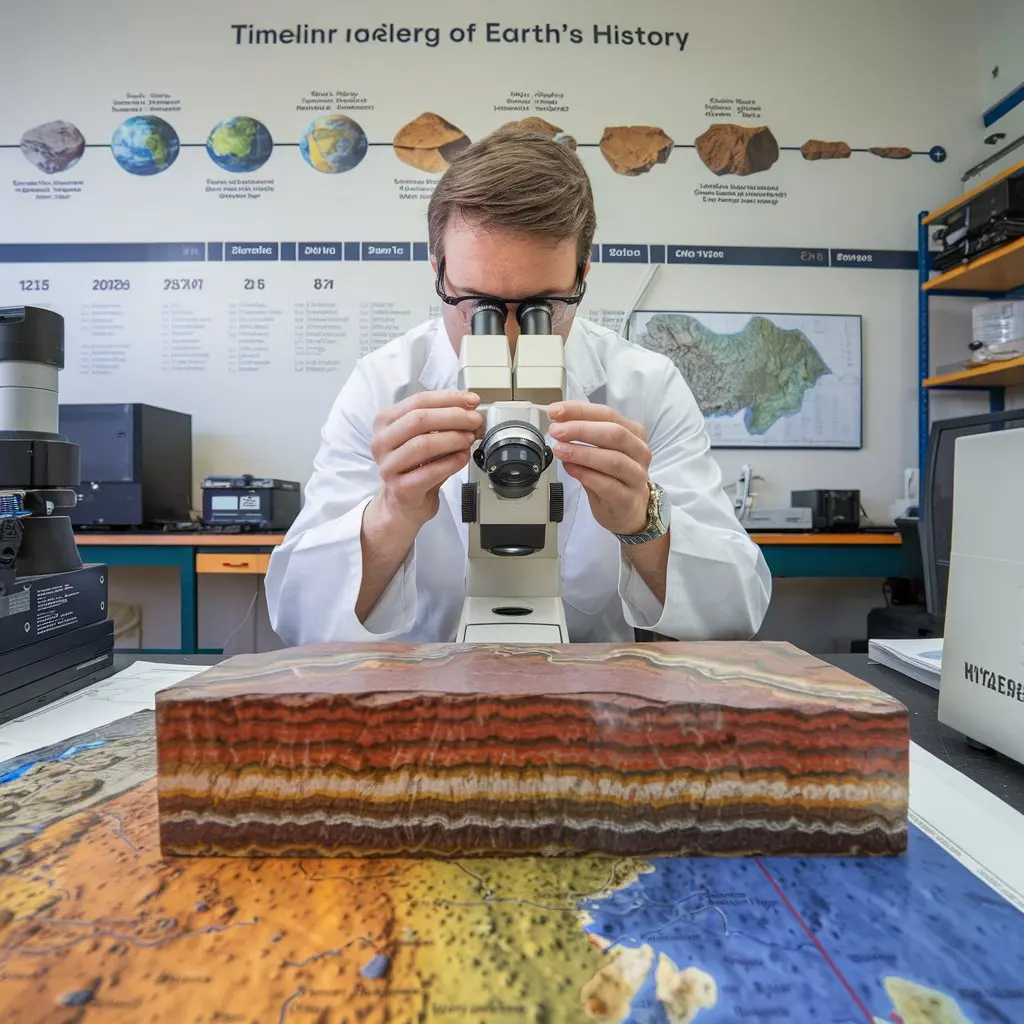Guide to Exercise 12.7: Putting It All Together to Decipher Earth History Efficiently
Understanding Earth’s history helps us see the planet’s evolution. Exercise 12.7 teaches how to decipher that history efficiently. This guide will break down the exercise into manageable steps. By the end, you’ll understand how to analyze Earth’s layers and events seamlessly.
Recognize Earth’s Geological Features
Geological features provide clues to Earth’s history. Rocks, fossils, and landforms hold information about the past. You should first focus on identifying these key features. For example, sedimentary rocks often form in layers, each representing a different time period.
To analyze these features, ask questions. What type of rock is it? What processes could have formed it? Understanding how each rock type forms will help you place it within Earth’s timeline. Rocks can tell us about past environments, climates, and even life forms.
Study Rock Layers (Stratigraphy)
Stratigraphy is the study of rock layers. These layers stack up over time, with the oldest at the bottom. This basic principle is called the law of superposition. Learning to read these layers can show you Earth’s chronological order of events.
Exercise 12.7 encourages you to examine the thickness, color, and texture of rock layers. Changes in these aspects may indicate shifts in the environment or major events, like volcanic eruptions. The presence of certain minerals or fossils can further pinpoint time periods.
Use Fossils to Determine Timeframes
Fossils are critical for dating rocks. They tell us about the species that existed when the rock was formed. Index fossils, in particular, help geologists date rock layers. These fossils are from species that existed for a short, well-known time span.
In Exercise 12.7, you’ll learn how to compare fossils from different layers. If you find an index fossil, you can determine the relative age of the layer. The more fossils you find, the clearer the history becomes. They can also reveal environmental changes, like shifts in sea levels.
Apply Radiometric Dating
Radiometric dating is another key tool. It measures the decay of radioactive isotopes in rocks. By knowing the decay rate, scientists can estimate the rock’s age. This process allows us to assign absolute dates to rocks and fossils.
In Exercise 12.7, you will apply basic principles of radiometric dating. You will practice calculating the age of rock samples based on isotope decay. It’s a precise method, adding a layer of accuracy to the timeline of Earth’s history.
Look for Unconformities
Unconformities are gaps in the rock record. They indicate periods where no deposition occurred, or layers were eroded away. These gaps can tell us about major changes in Earth’s history, like shifts in tectonic activity or climate.
You’ll identify different types of unconformities in this exercise. Disconformities, nonconformities, and angular unconformities all tell different stories. Understanding these breaks will give you a fuller picture of Earth’s past.
Examine Cross-Cutting Relationships
Geologists use cross-cutting relationships to date events. If a fault or intrusion cuts through other layers, it’s younger than the layers it cuts across. This principle helps geologists order events in Earth’s history.
During Exercise 12.7, you will learn how to identify these relationships in diagrams. By practicing this skill, you will become more efficient in piecing together Earth’s timeline. It’s a quick way to figure out the sequence of events.
Practice Correlating Rock Layers
Correlating rock layers means matching layers of similar age from different locations. This method helps you build a broader picture of Earth’s history. Layers with similar fossils or compositions likely formed at the same time.
In this exercise, you will practice correlating layers across regions. This technique is essential for understanding Earth’s global history. Correlation allows you to link events that occurred across vast distances.
Combine Dating Methods
Combining dating methods provides the most accurate picture of Earth’s history. Stratigraphy, fossil records, and radiometric dating each offer pieces of the puzzle. When you combine them, you get a clearer and more complete view.
In Exercise 12.7, you will put everything together. You’ll practice using multiple methods to date rock layers and decipher Earth’s history. This holistic approach will make you a more efficient geologist.
Interpret Tectonic Activity
Tectonic activity plays a major role in shaping Earth’s surface. Plate movements create mountains, valleys, and ocean basins. They also cause earthquakes and volcanic activity, which leave marks in the rock record.
This exercise will show you how to identify signs of tectonic activity in rocks. Look for fault lines, folds, and igneous intrusions. These features reveal important information about the forces that shaped Earth.
Understand Sedimentary Structures
Sedimentary structures, like ripple marks and mud cracks, provide clues about past environments. For example, ripple marks may indicate an ancient shoreline. Mud cracks suggest a dry environment, like a desert or a drying lake.
You’ll learn to identify these structures in Exercise 12.7. They offer valuable information about the climate and geography of past landscapes. These small details help piece together the bigger picture.
Identify Volcanic Activity
Volcanic eruptions leave behind distinct features. Volcanic ash layers, lava flows, and igneous rocks all point to past eruptions. These layers can often be dated, helping to place them within Earth’s history.
You’ll practice recognizing signs of volcanic activity in this exercise. By doing so, you’ll be able to spot major volcanic events in the rock record. These events often mark significant shifts in Earth’s history.
Recognize Sea-Level Changes
Sea levels have risen and fallen throughout Earth’s history. These changes leave marks in the rock record. For example, marine fossils found inland indicate that the area was once underwater.
Exercise 12.7 will teach you how to identify evidence of past sea-level changes. These changes often correspond to global climate shifts. Understanding sea levels helps you see how Earth’s surface has evolved.
Put It All Together
By the end of Exercise 12.7, you’ll have a complete toolkit for deciphering Earth’s history. You’ll know how to analyze rocks, fossils, and other features. You’ll understand how to place events in order and estimate their timing.
Deciphering Earth’s history requires patience and practice. But with the skills you gain in this exercise, you’ll be able to read the rock record efficiently. Keep practicing, and soon you’ll be able to piece together Earth’s history with ease.
Conclusion
Exercise 12.7 offers a comprehensive approach to studying Earth’s history. By following the steps outlined in this guide, you’ll master the art of geological analysis. Understanding Earth’s past helps us make sense of the present and future. Keep exploring, and enjoy uncovering the secrets of our planet’s history.







